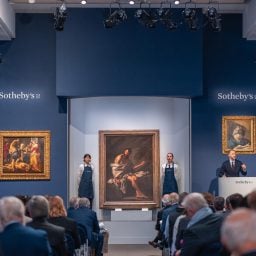Artnet Auctions’s current Post-War and Contemporary Art sale presents a wide range of hard-hitting works by luminary artists from the post-war period to today. With such a wide range of works to explore, we asked our specialists to tell us about some of their favorites.
From a dreamy early piece by Yayoi Kusama, to a Manolo Valdés masterwork, read on for the picks, and be sure to place your bids on Post-War and Contemporary Art before this major sale closes on May 18.

Hernan Bas, Hoot Hoot (2005). Available now in Post-War and Contemporary Art on Artnet Auctions. Est. $18,000—22,000.
Hernan Bas’s expressionist compositions are celebrated for their romantic quality, using rich swatches of color to create a tilted perspective, fluctuating between representation and abstraction. In 2005, Bas received a fellowship in Giverny, France, where he had the opportunity to paint at Claude Monet’s lush, chromatic estate. The present work on paper, Hoot Hoot (2005), draws inspiration from the sight and sound of birds Bas experienced on his morning strolls through Giverny.
The gray and brown owl evokes the bird’s long tradition in art history. Perched on a branch, Bas’s bird recalls canonical works like Vincent van Gogh’s Barn Owl Viewed from the Front (1887) and Albrecht Dürer’s The Little Owl (1506). Despite the familiarity of the bird and its surroundings, an element of mysterious abstraction, characteristic of Bas’s oeuvre, is at play.
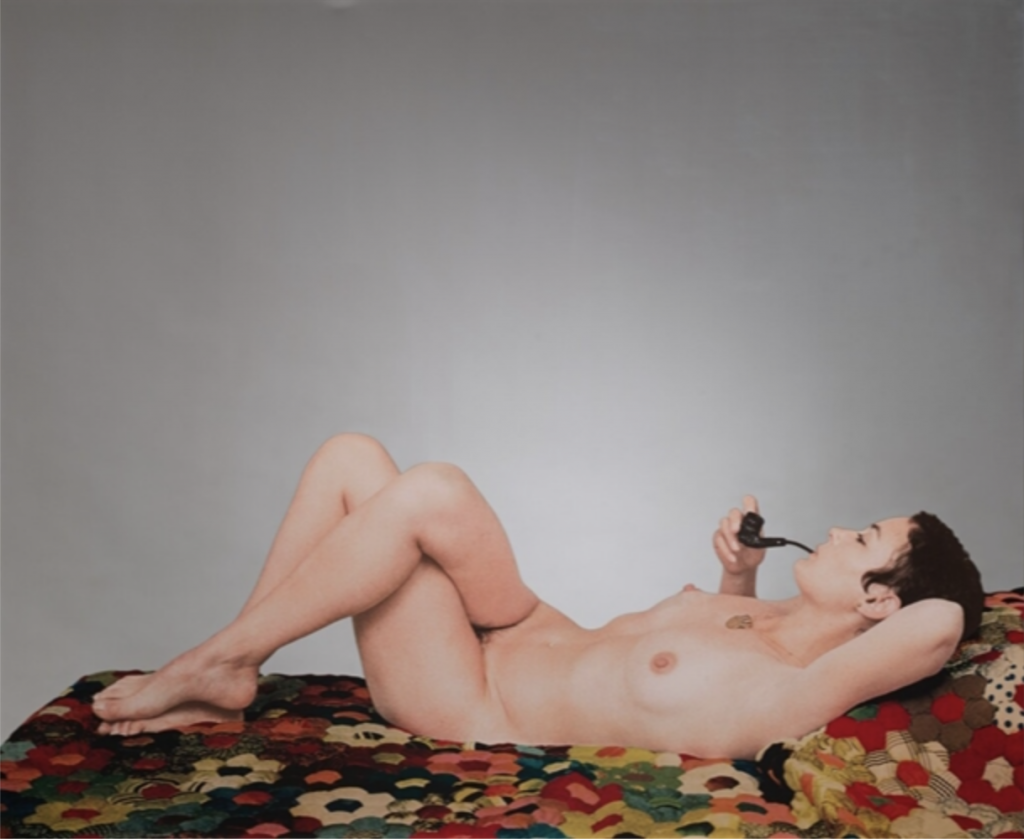
Michelangelo Pistoletto, Venere con la pipa (1973). Available now in Post-War and Contemporary Art on Artnet Auctions. Est. $80,000—100,000.
Italian painter, performance artist, and theorist Michelangelo Pistoletto is known for his stainless steel paintings that replace the traditional canvas for a mirrored surface, as a means of implicating the viewer and their surroundings into the artistic environment. In Venere con la pipa (1973), a woman lays nude, languidly smoking a pipe atop a quilted bedspread. Much like the odalisques found in classical portraiture, Venere, Italian for Venus, seems wholly unaware or unbothered by the eyes of the viewer. Yet Venere, with her eyes cast upward, sardonically engages in the traditionally male pastime of smoking.
Pistoletto is a key member of the Arte Povera movement, and he has maintained a career-long interest in elevating quotidian objects and scenes. Most notably, the artist’s 1966 Minus Objects series, which includes a set of columns and a two-dimensional table and chairs shown alongside a series of mirror paintings, was awarded first prize in the São Paulo Biennale.
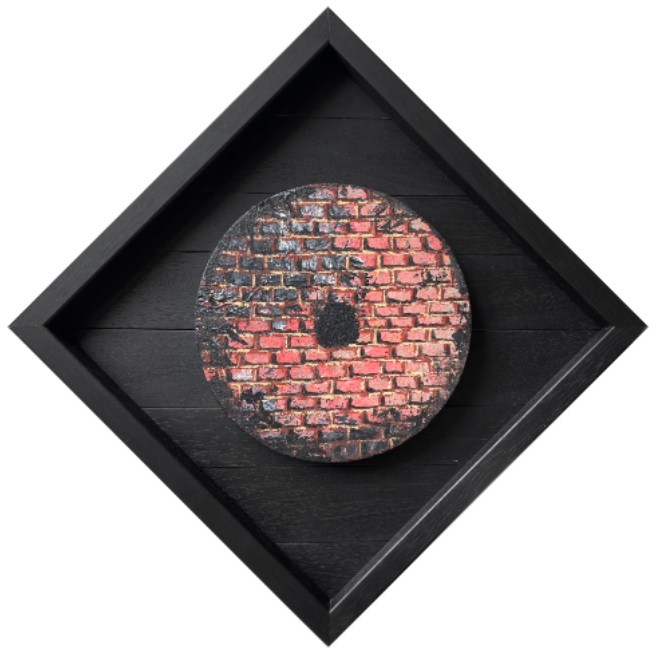
Martin Wong, Untitled (Brick Disc) (1994). Available now in Post-War and Contemporary Art on Artnet Auctions. Est. $60,000—80,000.
Martin Wong’s signature subject matter, the brick wall, appears in Untitled (Brick Disc) (1994). The round canvas, or tondo, is the traditional format for Old Masters portraiture. Yet, instead of a face, Wong presents a brutal assortment of red bricks showing obvious traits of exposure and wear. Mottled in their tones of red, pink and yellow, Wong’s bricks line up to form a skin cell-like pattern, at once organic and inorganic. The rhythm of rectangular bricks is disturbed by black and gray paint that is applied with impasto atop the painted wall. Untitled (Brick Disc) combines the artist’s interest in the convergence of identity and the city, possibly serving as his own version of a self-portrait.
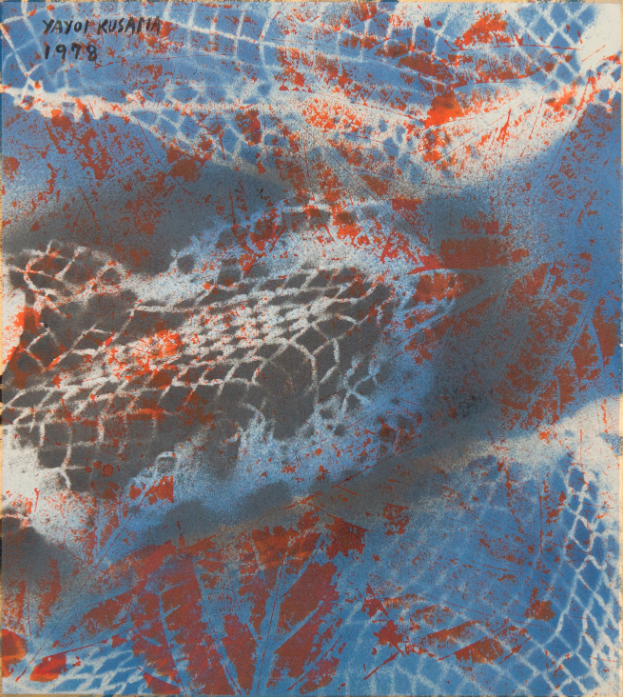
Yayoi Kusama, As Ripples Form, 1978. Available now in Post-War and Contemporary Art on Artnet Auctions. Est. $40,000—60,000.
As Ripples Form (1978) is a rare early work by Yayoi Kusama that’s in pristine condition. The piece was created on a Shikishi board, rather than traditional canvas, creating an extraordinary sense of layering. The composition is covered in Kusama’s iconic infinity nets pattern, which appears in her early paintings and installations. Beneath this veil, the board is decorated with transferred images of fall leaves, faint and weathered. Kusama weaves these objects into a swirl of bright blue, rusty red, black, and white, making familiar images feel foreign and whimsical. Warped and contorted, the composition drags the eye across the board in a curving motion, evoking the ripple effect that inspires the title.
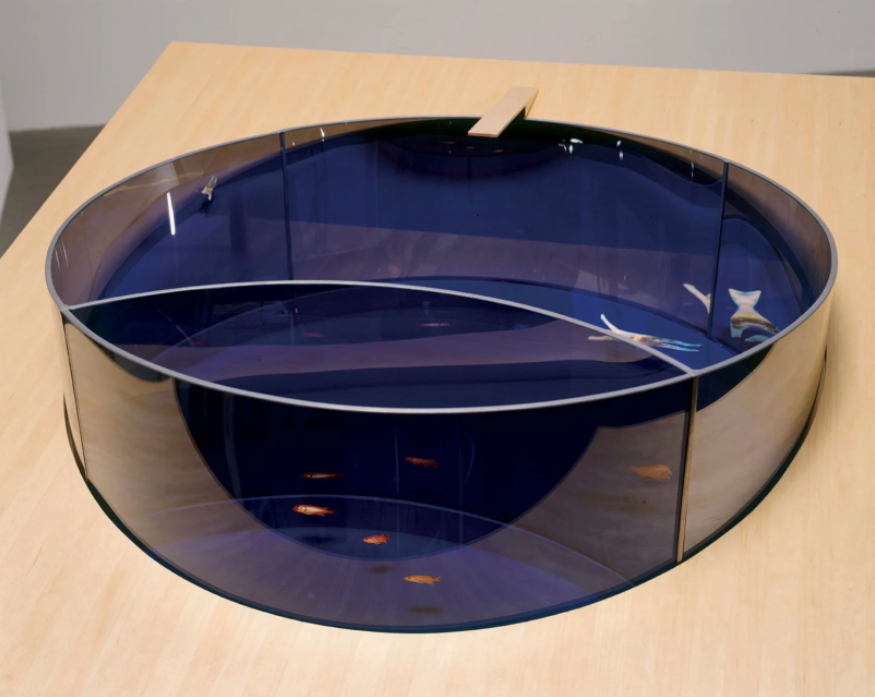
Dan Graham, Swimming Pool/Fish Pond (1997). Available now in Post-War and Contemporary Art on Artnet Auctions. Est. $40,000—60,000.
Throughout his career, the late Dan Graham explored a variety of media, including photography, installation, performance, video, and written word. He was known for his work as a curator, critic, and cultural theorist whose musings on Sol LeWitt, Dan Flavin, and Donald Judd shaped the history of art.
Some of Graham’s most celebrated works are his so-called pavilions: steel and glass architectural structures. In Swimming Pool/Fish Pond (1997), Graham continues to explore transparency and reflection as he imagines an ideal space where both animal and man can occupy the same aquatic environment, separated only by a curved window.
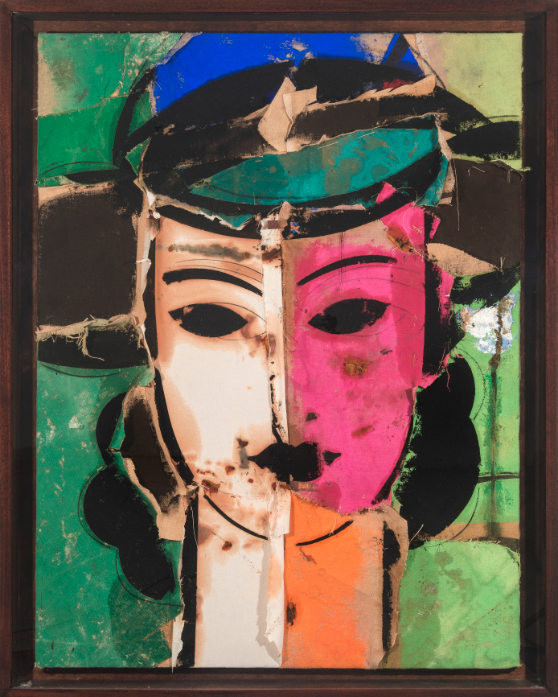
Manolo Valdés, Rostro con sombrero II, 2003. Available now in Post-War & Contemporary Art on Artnet Auctions. Est. $200,000—300,000.
Spanish artist Manolo Valdés is best known for his portraits of women, created in his iconic, signature style, which merges the aesthetic affinities of artists like Diego Velázquez, Henri Matisse, and Rembrandt. Rostro con sombrero II (2003) recalls Matisse’s Woman with a Hat, both in its subject matter and title. Its vivid hues echo Matisse’s palette, employed in the 1905 boundary-pushing masterpiece. The market for works by Valdés remains strong, as does his exhibition history and presence in museum collections such as the Metropolitan Museum in New York.








